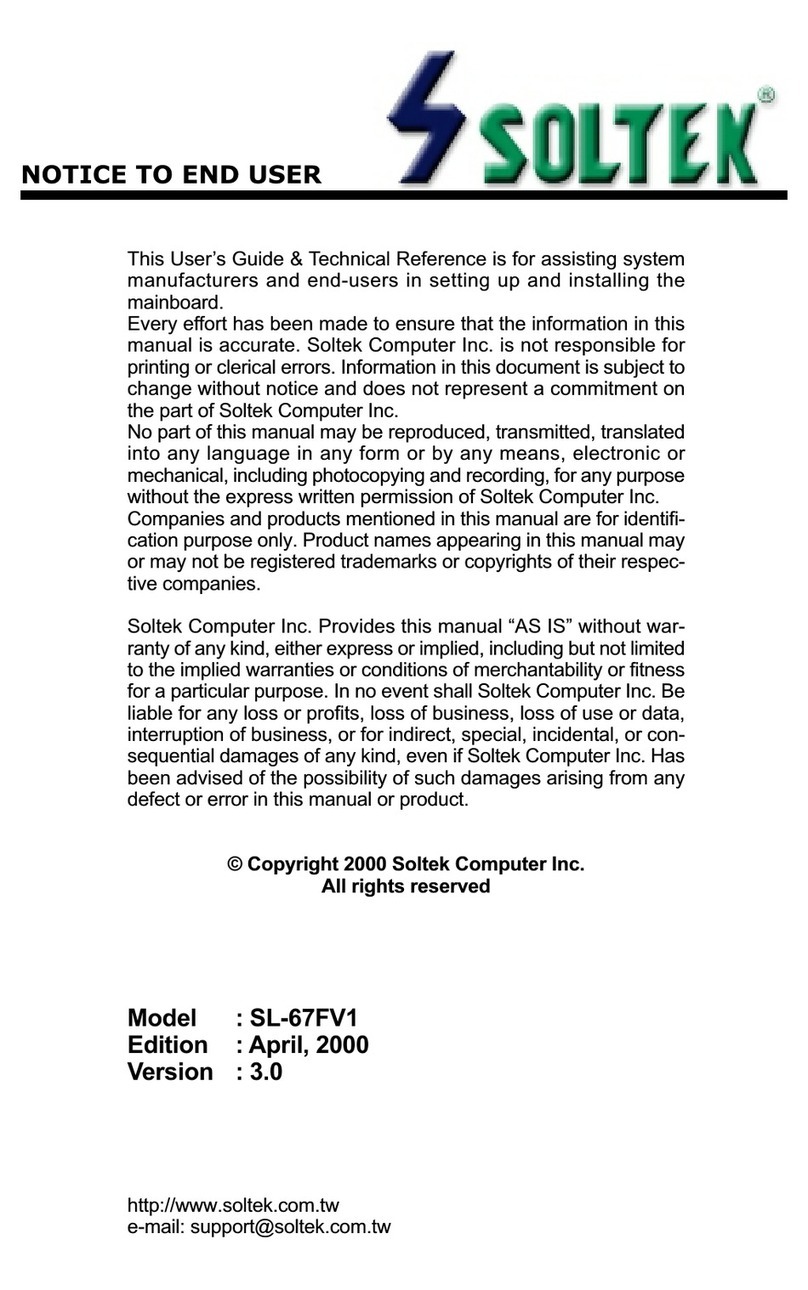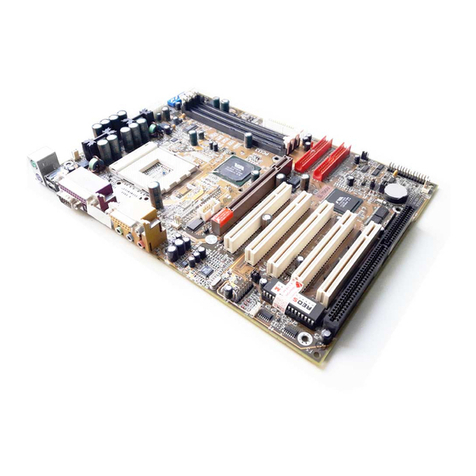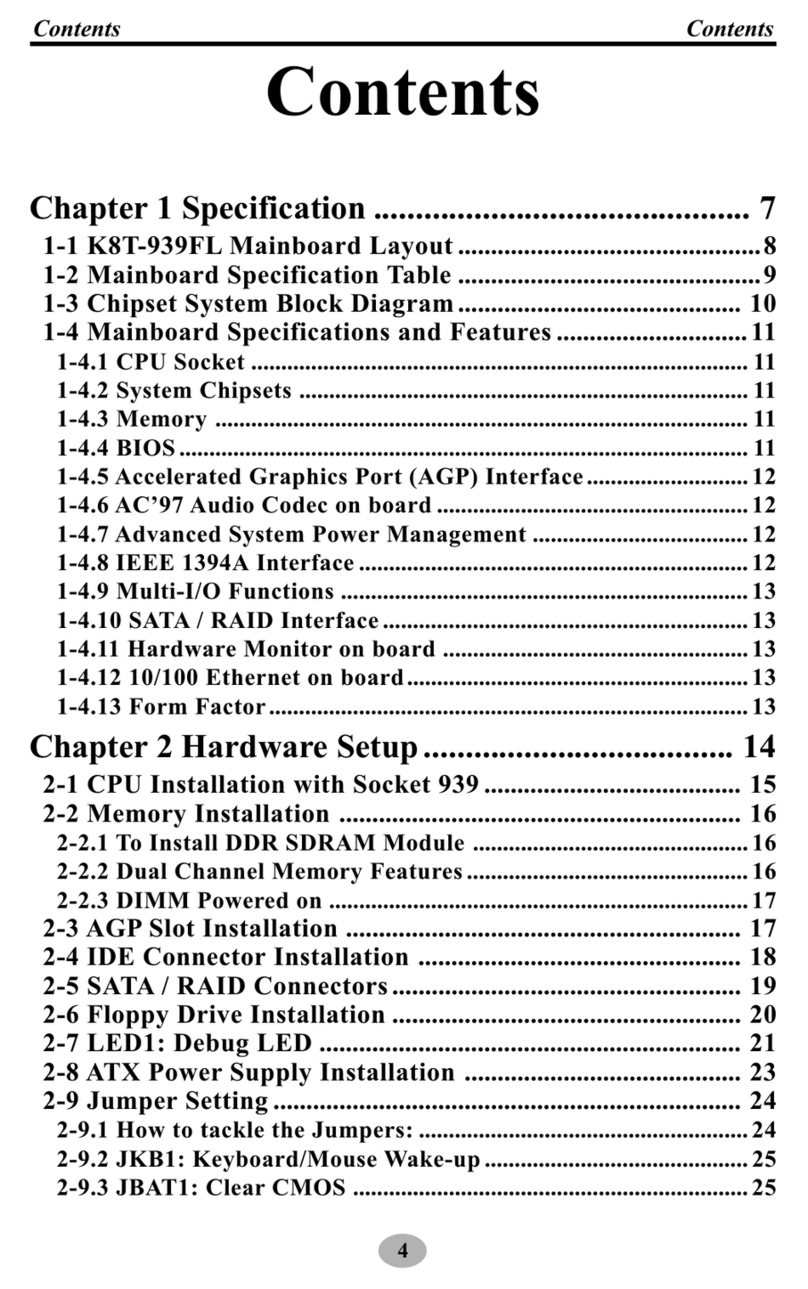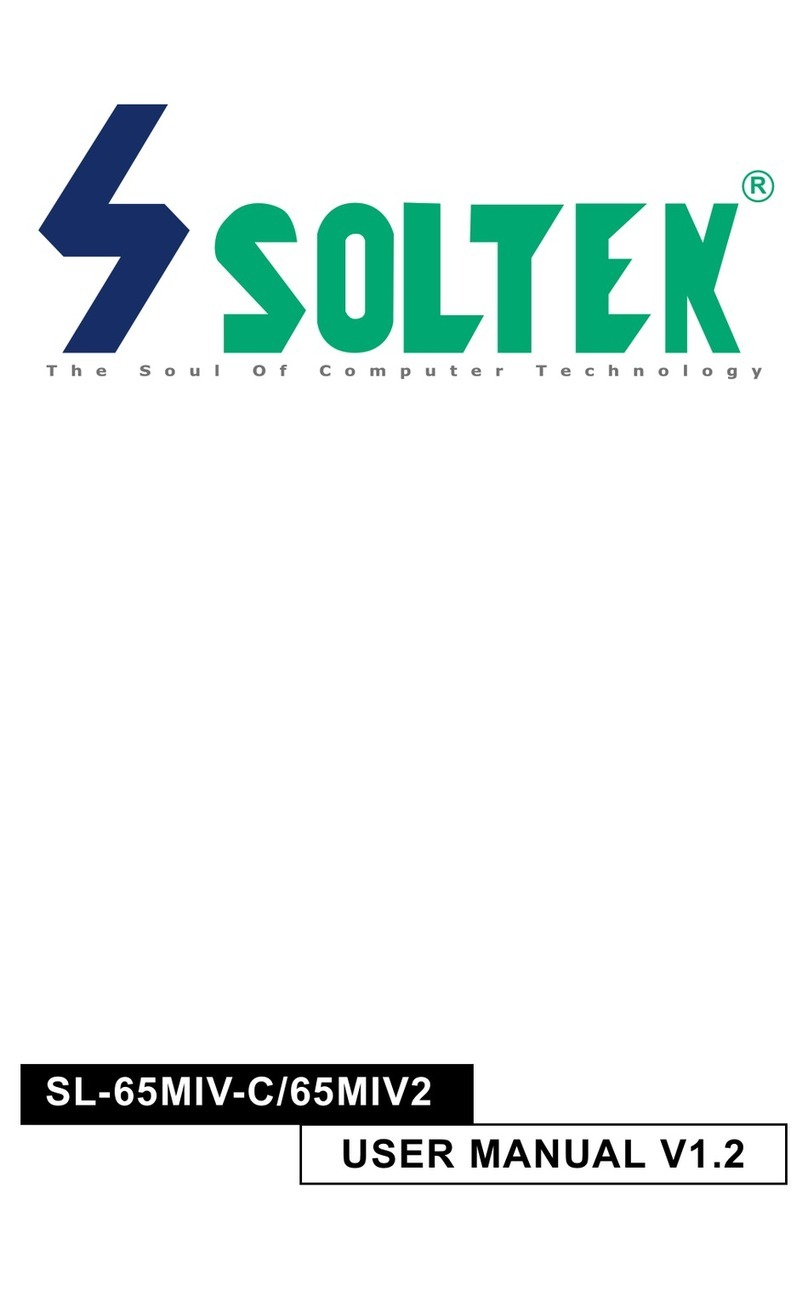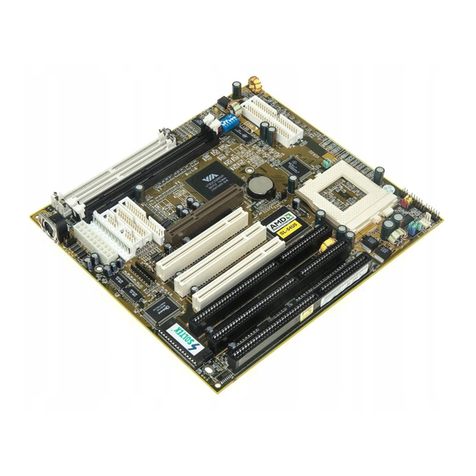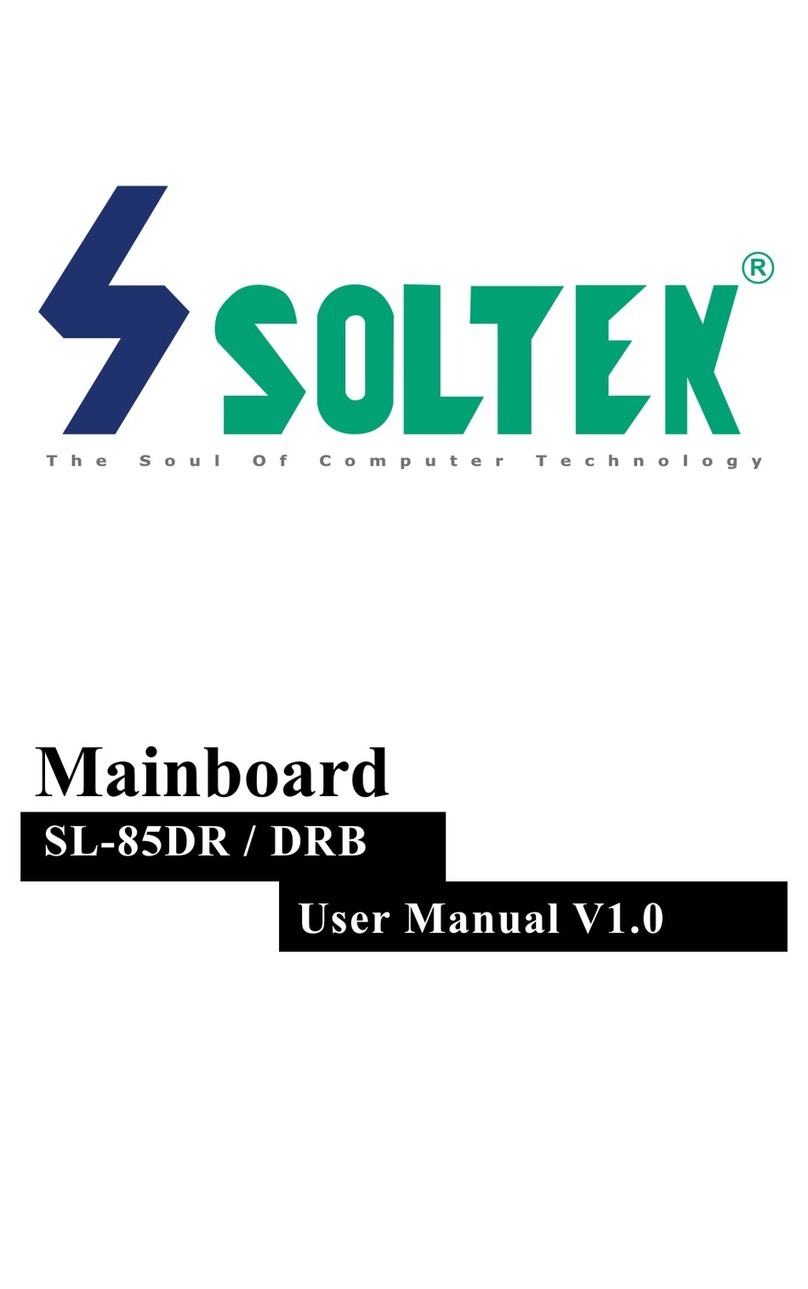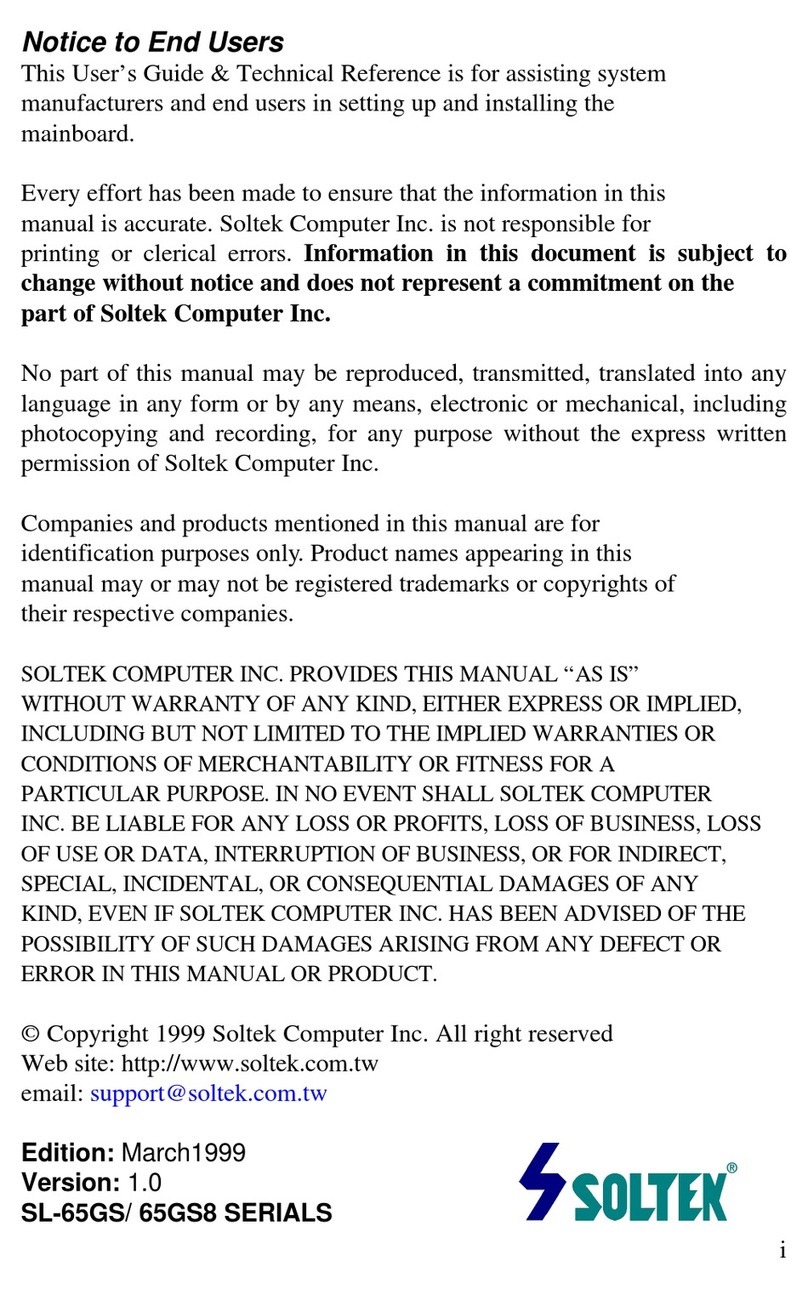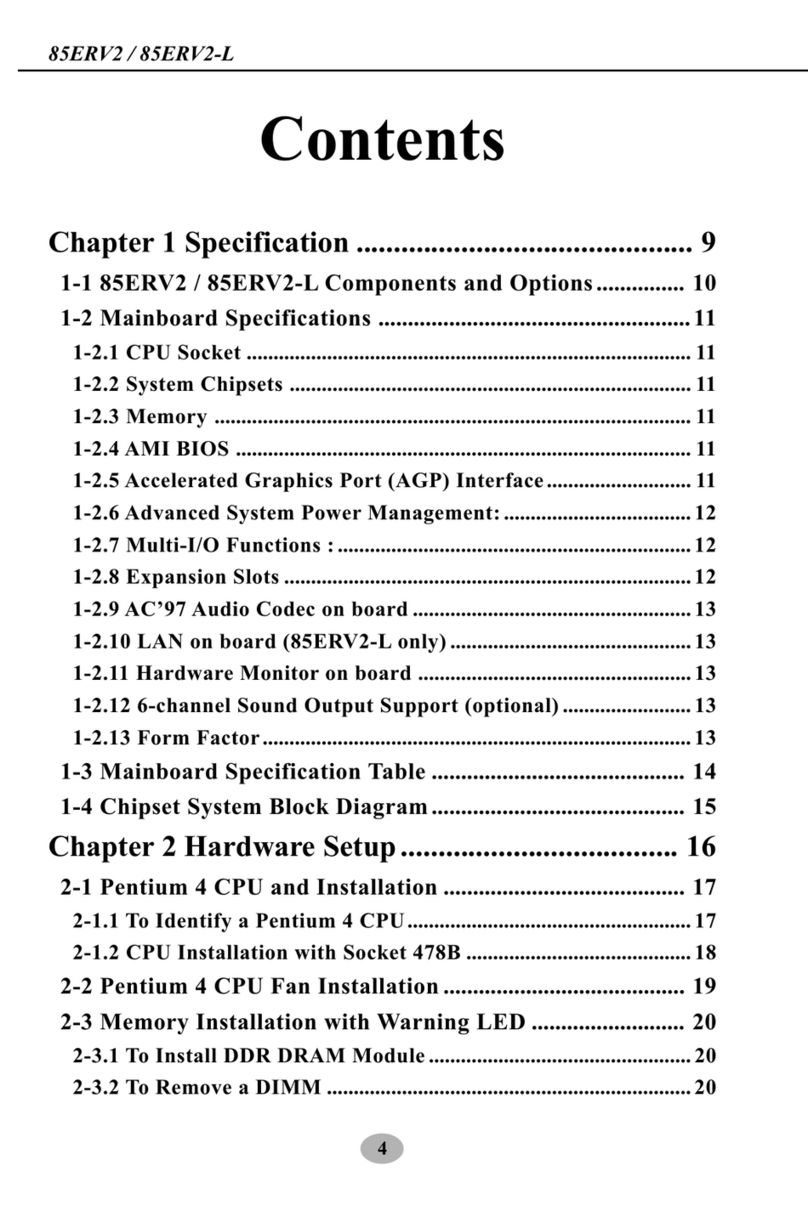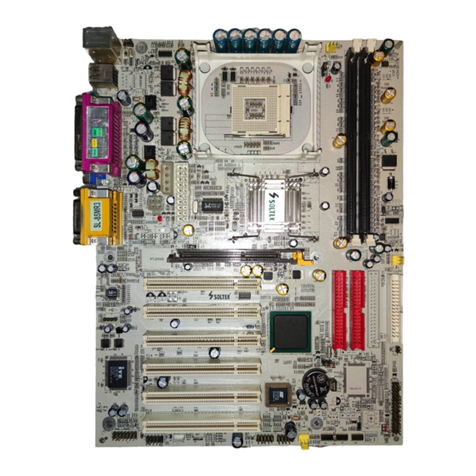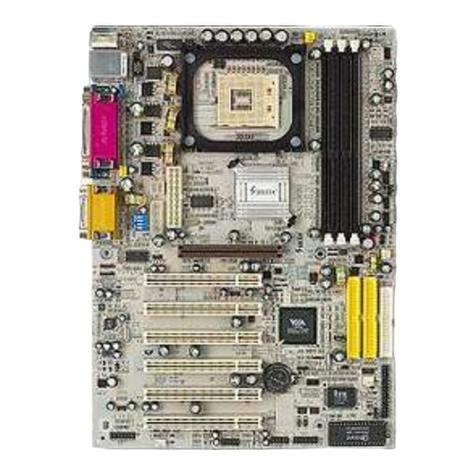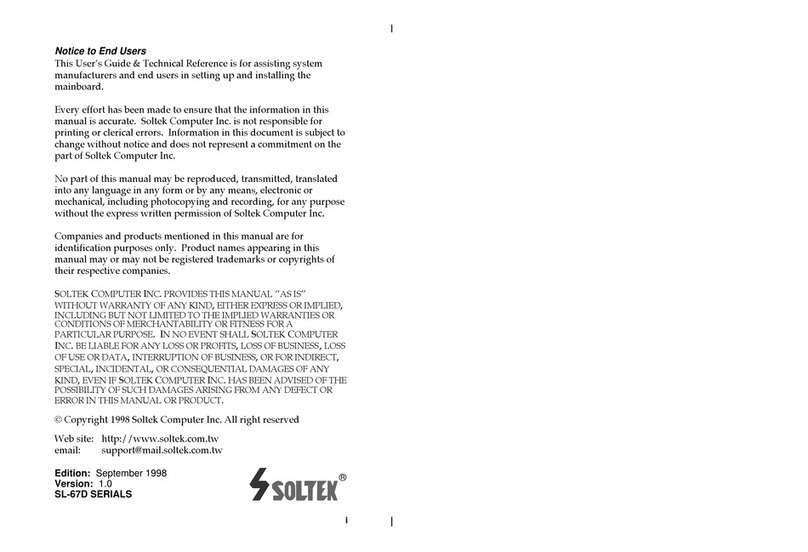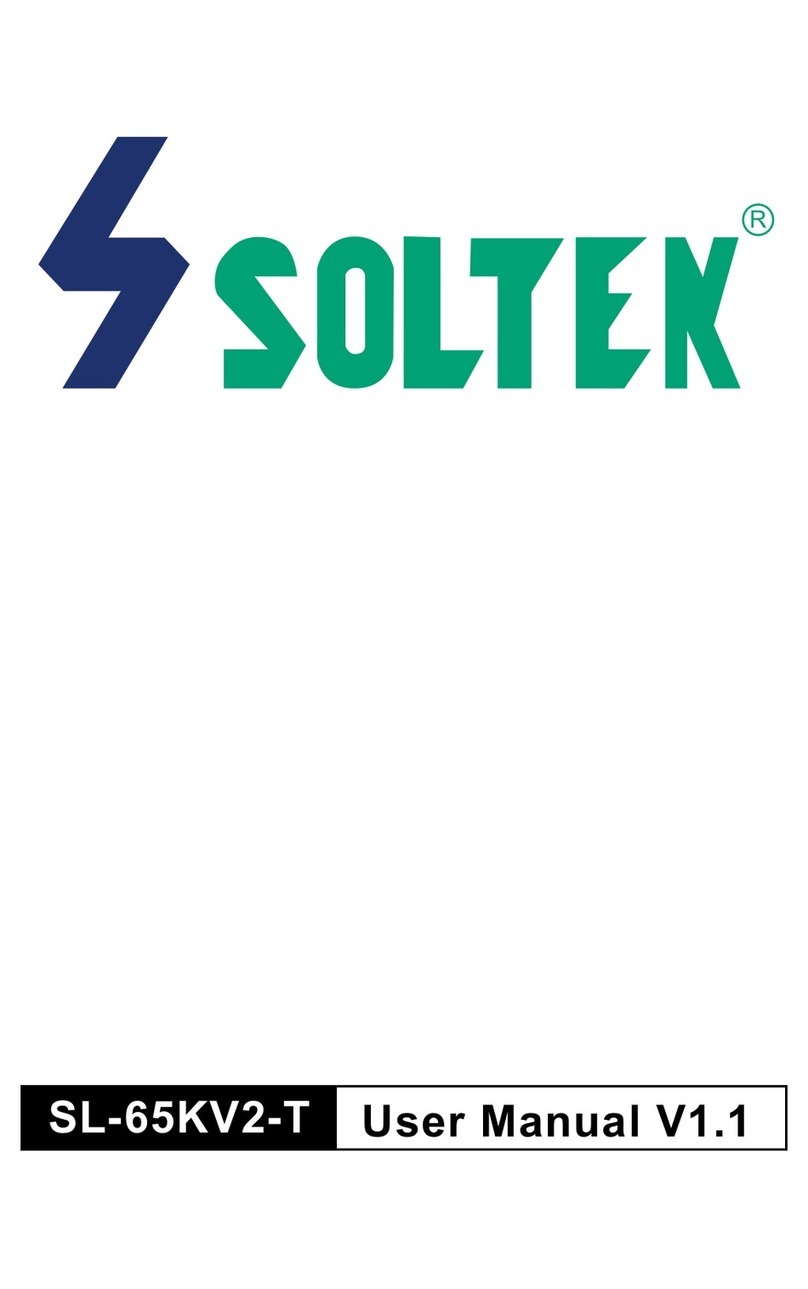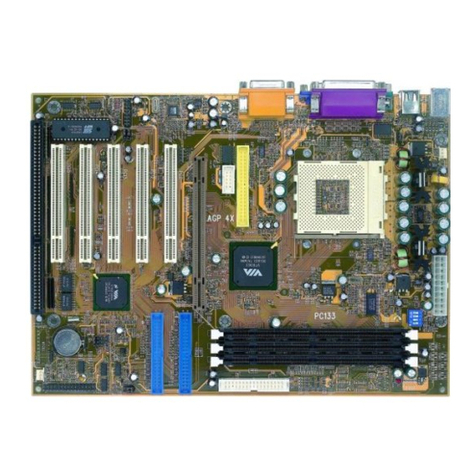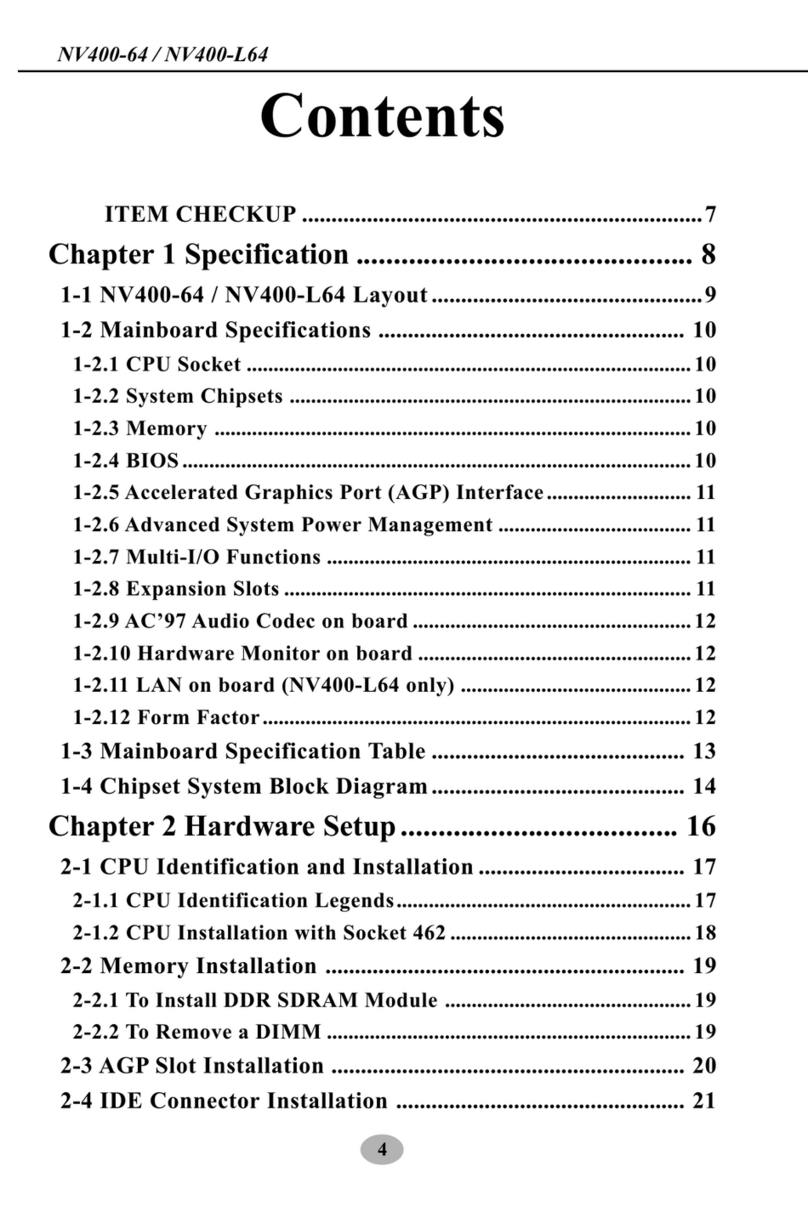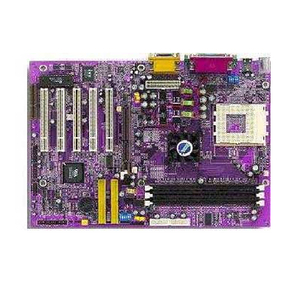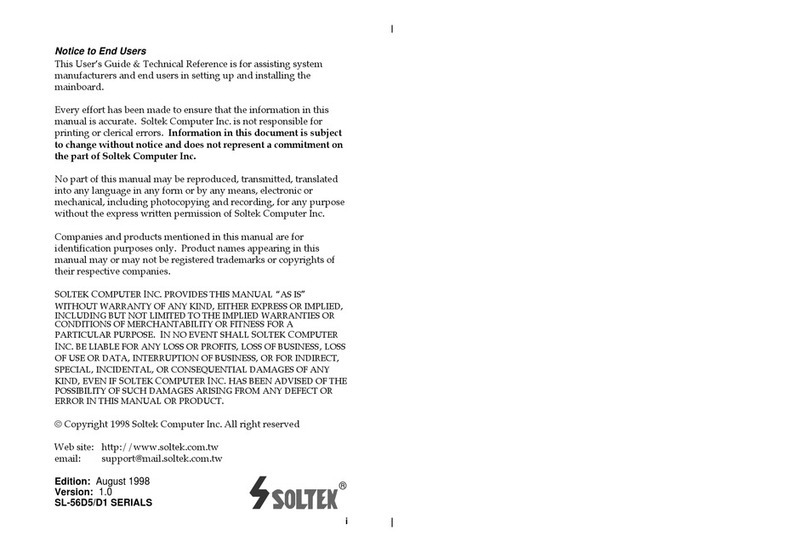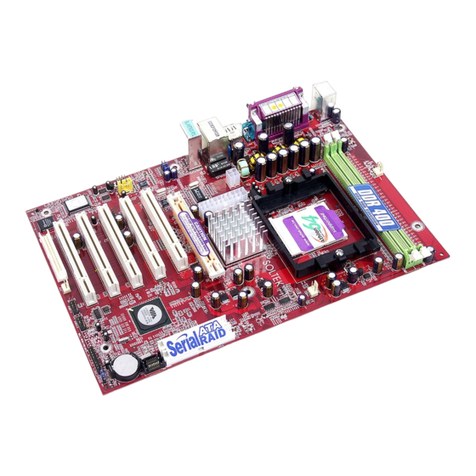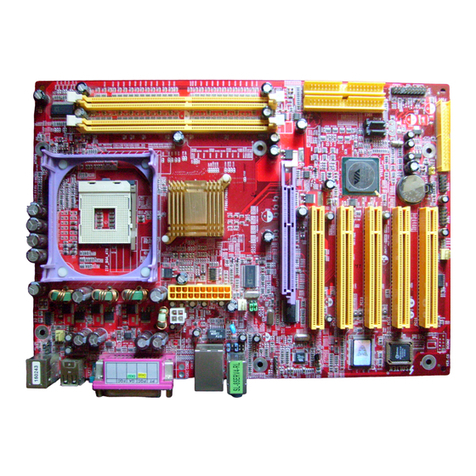
This User‘s Guide & Technical Reference is for assisting system
manufacturers and end-users in setting up and installing the
mainboard.
Everyefforthasbeenmadetoensurethattheinformationinthismanual
is accurate. Soltek Computer Inc. is not responsible for printing or
clericalerrors.Informationinthisdocumentissubjecttochangewith-
outnoticeanddoesnotrepresentacommitmentonthepartofSoltek
ComputerInc.
No part of this manual may be reproduced, transmitted, translated
into any language in any form or by any means, electronic or
mechanical, including photocopying and recording, for any purpose
without the express written permission of Soltek Computer Inc.
Companies and products mentioned in this manual are for identifica-
tion purpose only. Product names appearing in this manual may or
may not be registered trademarks or copyrights of their respective
companies.
Soltek computer inc. Provides this manual “As is “ without war
ranty of any kind, either express or implied, including but not lim-
ited to the implied warranties or conditions of merchantability or fit-
ness for a particular purpose. In no event shall Soltek computer inc.
Be liable for any loss or profits, loss of business, loss of use or data,
interruption of business, or for indirect, special, incidental, or conse-
quentialdamages of any kind, evenif Soltek computer inc. Hasbeen
advised of the possibility of such damages arising from any defect or
error in this manual or product.
© Copyright 2000 Soltek Computer Inc.
All rights reserved.
http://www.soltek.com.tw
Model : SL-65F+
Edition : March 2000
Version : 2.0
R
